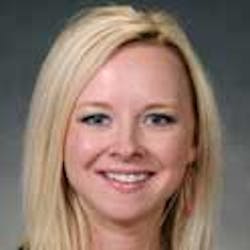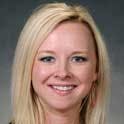Dental professionals can help screen for sleep apnea
Editor’s note: Kristin Dillow is an active member of the American Academy of Dental Sleep Medicine (AADSM) and was recently selected as a recipient of an AADSM Clinical Research Award for 2014.
Obstructive sleep apnea (OSA) is characterized by lapses in breathing or a significant reduction of airflow during sleep. When left untreated, OSA can impair quality of life and lead to the development of hypertension, cardiovascular disease, diabetes, stroke, and depression. According to a recent epidemiological study, moderate or severe OSA affects 10% of men and 3% of women ages 30 to 49 years, and 17% of men and 9% of women ages 50 to 70 years.Furthermore, more than 80% of moderate or severe cases of OSA remain undiagnosed. These numbers reveal that the public health initiative for economical OSA screening in clinical settings is imperative.
ADDITIONAL READING |Prospective multicenter cohort study of obstructive sleep apnea (OSA) patients treated with a custom-made mandibular repositioning device (MRD)
Dentists and dental hygienists may represent an important resource for identifying individuals at risk for OSA, especially for dental patients who do not regularly access general health care. An estimated 23% of adults who visit the dentist regularly do not have contact with a physician. The aim then of this study was to investigate the feasibility of screening for OSA risk in a dental practice and to examine the response of patients to a recommendation for physician evaluation when screening high risk.
ADDITIONAL READING |‘Captain, permission to come aboard’ – getting the team on-board with OSA therapy
Dental hygienists at a community-based dental practice recruited a convenience sample of 119 patients. Subjects were given the validated STOP (stop sleep apnea/snoring) screening questionnaire and a portable pulse oximeter for overnight monitoring of oxygen saturation. The questionnaire classifies subjects at high risk for OSA if more than two of the following are present: loud snoring, daytime tiredness, observed gaps in breathing, or high blood pressure. The overnight pulse oximetry test classifies patients as high-risk for OSA depending on their oxygen levels during the test. Afterwards, subjects were notified by a letter of their OSA risk according to each screening instrument. Those classified as high-risk on one or both instruments were advised to seek physician evaluation within three months.
Overall, more than half of the subjects screened high-risk on the STOP or on the pulse oximetry, and a third screened high-risk on both instruments. Follow-up evaluations via telephone were obtained to determine the response to the recommendation. With a 90 response rate, more than a third of those who screened high-risk for OSA sought physician evaluation within three months of screening. Subjects who screened high-risk on both the questionnaire and pulse oximetry were not significantly more likely to consult a physician than those at risk on the STOP questions alone.
Our study concluded that screening for OSA with simply administered instruments is feasible, well-tolerated by dental patients, and encourages health-seeking behavior. More than one-third of high-risk subjects complied with a recommendation to seek physician evaluation following OSA screening in a dental practice. This study also establishes grounds to suggest that by incorporating OSA screening into clinical practice, dental practitioners can alert patients about the need for follow-up with a physician, when warranted. Additionally, it shows dental practitioners and physicians can work cooperatively to identify individuals at risk for OSA.

